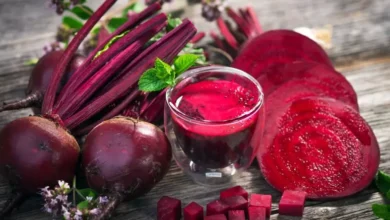How to Curb Cravings Without Feeling Deprived
Everyone has cravings from time to time—whether it’s for something salty, sweet, crunchy, or creamy. Cravings are normal, but when they lead to poor food choices or overeating, they can sabotage your health goals. The good news? You can curb cravings without feeling deprived, restricted, or guilty.
In this article, we’ll explore smart strategies to manage cravings in a healthy and sustainable way, so you can enjoy food, nourish your body, and still stay on track.
What Causes Food Cravings?
Cravings are complex and can be triggered by several factors, including:
- Nutritional imbalances (e.g., craving sugar when your energy drops)
- Emotional triggers like stress, boredom, or anxiety
- Hormonal fluctuations, especially in women
- Lack of sleep or dehydration
- Environmental cues, such as ads, smells, or even memories
Understanding the root of your craving helps you respond more thoughtfully.
Craving vs. Hunger: Know the Difference
It’s important to differentiate between real hunger and a craving.
- Hunger builds gradually, and you’ll be open to eating a variety of foods.
- Cravings tend to hit suddenly and focus on specific items (like cookies or chips).
Next time you feel the urge to snack, pause and ask:
Am I really hungry, or am I craving something for comfort or out of habit?
Strategies to Curb Cravings (Without Saying “No” to Everything)
You don’t have to give up your favorite foods—you just need a smart approach. Here’s how:
1. Don’t Skip Meals
Skipping meals often leads to energy crashes and intense cravings, especially for sugar or carbs.
Tip: Eat balanced meals every 3–4 hours with protein, healthy fats, and fiber to keep blood sugar stable and appetite in check.
2. Stay Hydrated
Sometimes what feels like hunger is actually dehydration.
Try this: Drink a glass of water and wait 10 minutes. If you’re still hungry, it may be true hunger.
3. Choose Healthier Versions of What You Crave
Craving something sweet or salty? Choose a better-for-you version.
- Want chips? Try roasted chickpeas or air-popped popcorn with olive oil.
- Want chocolate? Choose dark chocolate with 70% cacao or more.
- Want ice cream? Try banana “nice cream” or Greek yogurt with fruit.
You’ll still satisfy your craving without the crash that ultra-processed foods bring.
4. Practice the “Delay and Distract” Technique
Before giving in to a craving, set a timer for 15 minutes. In that time, try one of the following:
- Take a walk
- Call a friend
- Do light stretches
- Read or listen to music
- Drink herbal tea
Often, the craving will pass—and if it doesn’t, you’ll know it’s more than just a passing impulse.
5. Don’t Ban Foods Completely
Restriction can lead to obsession. Instead of eliminating a food, enjoy it occasionally and mindfully.
For example, if you love pizza, plan to enjoy it once a week with a salad rather than eating it impulsively out of guilt. This builds a healthy relationship with food.
6. Keep Healthy Snacks Available
If your kitchen is full of cookies and chips, that’s what you’ll reach for. Stock your fridge and pantry with:
- Fresh fruit
- Nuts and seeds
- Cut-up veggies and hummus
- Hard-boiled eggs
- Greek yogurt
- Homemade energy bites
Make the healthy choice the easy choice.
7. Identify Emotional Triggers
Food is often used for comfort or distraction. Start noticing patterns—do you crave sugar when you’re stressed? Do you snack when you’re bored?
Tip: Keep a simple food/mood journal to track emotional eating triggers and find healthier outlets (like journaling, walking, or deep breathing).
8. Get Enough Sleep
Lack of sleep increases cravings, especially for sugary and high-fat foods, by disrupting hormones like ghrelin and leptin.
Aim for 7–9 hours of quality sleep each night. A rested body handles hunger and decision-making much better.
9. Eat Mindfully
Slow down and really enjoy your food. When you eat slowly, your brain has time to register fullness.
- Eat without distractions (like TV or your phone)
- Chew thoroughly
- Savor the flavors, textures, and aroma
You may find you need less food to feel satisfied.
10. Plan for Treats
Instead of relying on willpower, use structure. Plan small indulgences into your week so you enjoy them guilt-free.
Examples:
- Friday night dessert after dinner
- One small chocolate square after lunch
- A few salty snacks at a planned social event
This removes the “forbidden” feeling and helps prevent bingeing later.
Final Thoughts: Balance Beats Restriction
Cravings are normal—and manageable. You don’t have to feel guilty or out of control. With the right habits and mindset, you can honor your body’s signals, enjoy your favorite foods in moderation, and still make progress toward your health goals.
It’s not about saying no—it’s about saying yes more intentionally. Craving something? Pause, check in with yourself, and choose what makes you feel good—now and later.

Hello! My name is Alan Teixeira and I am passionate about helping people live healthier, more balanced lives. From mindful eating to daily habits that promote physical and mental well-being, I believe that small, consistent changes can lead to powerful transformations.
I created this blog to share practical tips, reliable information, and thoughtful insights that can inspire you to take better care of yourself—with balance, mindfulness, and positivity.
If you are looking to improve your health, nourish your body, and build a lighter, more fulfilling routine, you are in the right place. Welcome!





